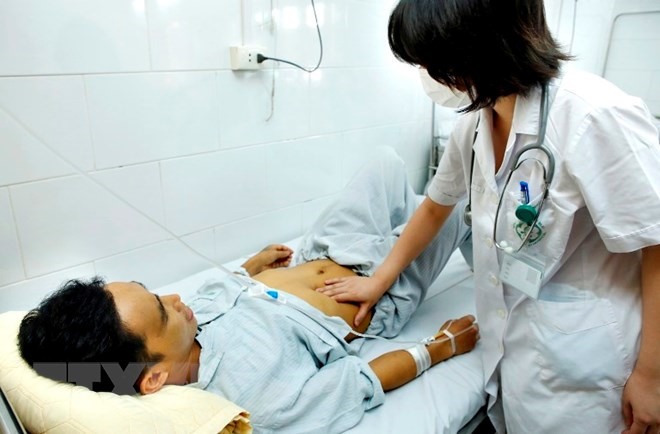

The Ministry of Health has reported that nearly one million Vietnamese people are infected with the hepatitis C virus (HCV).
 |
| A nurse examines a hepatitis patient at Bạch Mai Hospital. - VNA/VNS Photo Dương Ngọc |
HÀ NỘI – The Ministry of Health has reported that nearly one million Vietnamese people are infected with the hepatitis C virus (HCV).
According to recent statistics by the Preventive Medicine Department, 20,000 people die of liver cancer each year in Việt Nam, of which untreated hepatitis B and HCV are the leading causes of cirrhosis and liver cancer.
Ninety per cent of people with HCV are not aware of the infection. It is often called a ‘silent killer’ because it has no obvious symptoms but can be extremely dangerous and, in some cases, life threatening, medical experts say.
The ministry said the number of deaths caused by hepatitis B and C was the same as the number of people dying from HIV/AIDS and tuberculosis in Việt Nam.
There are vaccines to prevent hepatitis A and B, however, there is no vaccine for HCV. There are many new medicines that bring the cure rate up to 95 per cent.
However, due to high cost, many infected people do not have access to new drugs and have to live with it, leading to cirrhosis and liver cancer.
Many new drugs which are effective in treating hepatitis C are not covered by health insurance, causing difficulties for patients, said Nguyễn Văn Kính, director of the Central Tropical Hospital.
Hepatitis C patients in Việt Nam account for about 7 per cent of the population but only 0.1 per cent (6,000-8,000 patients) of them have access to treatment.
“The Ministry of Health allows using new drugs in HCV treatment in Việt Nam and the rate of recovery can be up to 90 per cent. It also has fewer side effects and the time of treatment and costs are reduced,” Kính told Nông Thôn Ngày Nay (Countryside Today) newspaper.
At present, the average cost for a stage of treatment was VNĐ45 million over three months, nearly a third cheaper than that for old medicines, he said.
Kính also suggested the new drugs should be covered by public health insurance so hundreds of thousands of patients can access HCV treatment.
Đàm Hiếu Trung, deputy director of Việt Nam Social Insurance’s centre of health insurance assessment and multi-level payment in the northern region, said public health insurance has still paid for some medicines for the treatment of hepatitis C.
The centre was still waiting for the Health Ministry’s decision on new drugs because the ministry was adjusting the list of drugs covered by public health insurance, he said.
Hepatitis C was a common disease but treatment was expensive, said Lê Văn Phúc, deputy head of the health insurance policy implementation department.
Health insurance funds could not afford to pay the full cost of treatment for patients with hepatitis C virus with an annual insurance premium of about VNĐ1 million.
“Ourselves and the Health Ministry are considering adding new drugs to the list covered by public health insurance because it takes time to carefully evaluate their effectiveness, cost, and balance with existing health insurance funds,” Phúc said. — VNS




